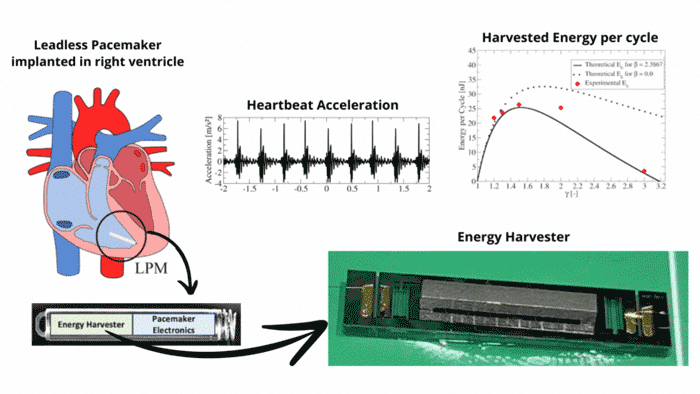Progress in microelectronics and MEMS technology has enabled all pacemakers’ components to fit in a very small volume (< 1 cm3). Such tiny pacemakers, called leadless pacemakers, are directly connected on the endocardium, inside heart cavity, without needing leads. This technology has brought significant improvements over conventional cardiac pacemakers, such as a simplified implantation procedure and the elimination of lead-related complications. Today, the main limitation of commercial leadless pacemakers is battery life. This study aims to provide a solution to extend battery life by converting biomechanical energy from heartbeat into electricity using an innovative MEMS electrostatic energy harvesting device.
We designed and fabricated a MEMS electrostatic energy harvester with dimensions that meet the requirements for implanting leadless pacemaker catheters, as well as a simple and efficient interface circuit performing rectangular charge-voltage (QV) cycles. The effect of the parasitic capacitance of the interface circuits on the energy conversion cycle showed that this parameter can significantly modify the shape of the QV cycles, and therefore the quantity of energy converted. We proposed an approach enabling to determine the optimal interface circuit based on the MEMS device and the interface circuit actual properties.
In both cases of harmonic and cardiac mechanical excitation, good agreement was found between theory and experimental data. Ex vivo experimental results showed that the proposed solution including two MEMS energy harvesting devices with optimal interface circuits could increase the battery life of commercial leadless pacemakers up to 44%. Our ongoing work aims to optimize the design and manufacturing of MEMS, with the aim of increasing performance so that the energy harvesting device can cover the entire power consumption of the pacemaker.

